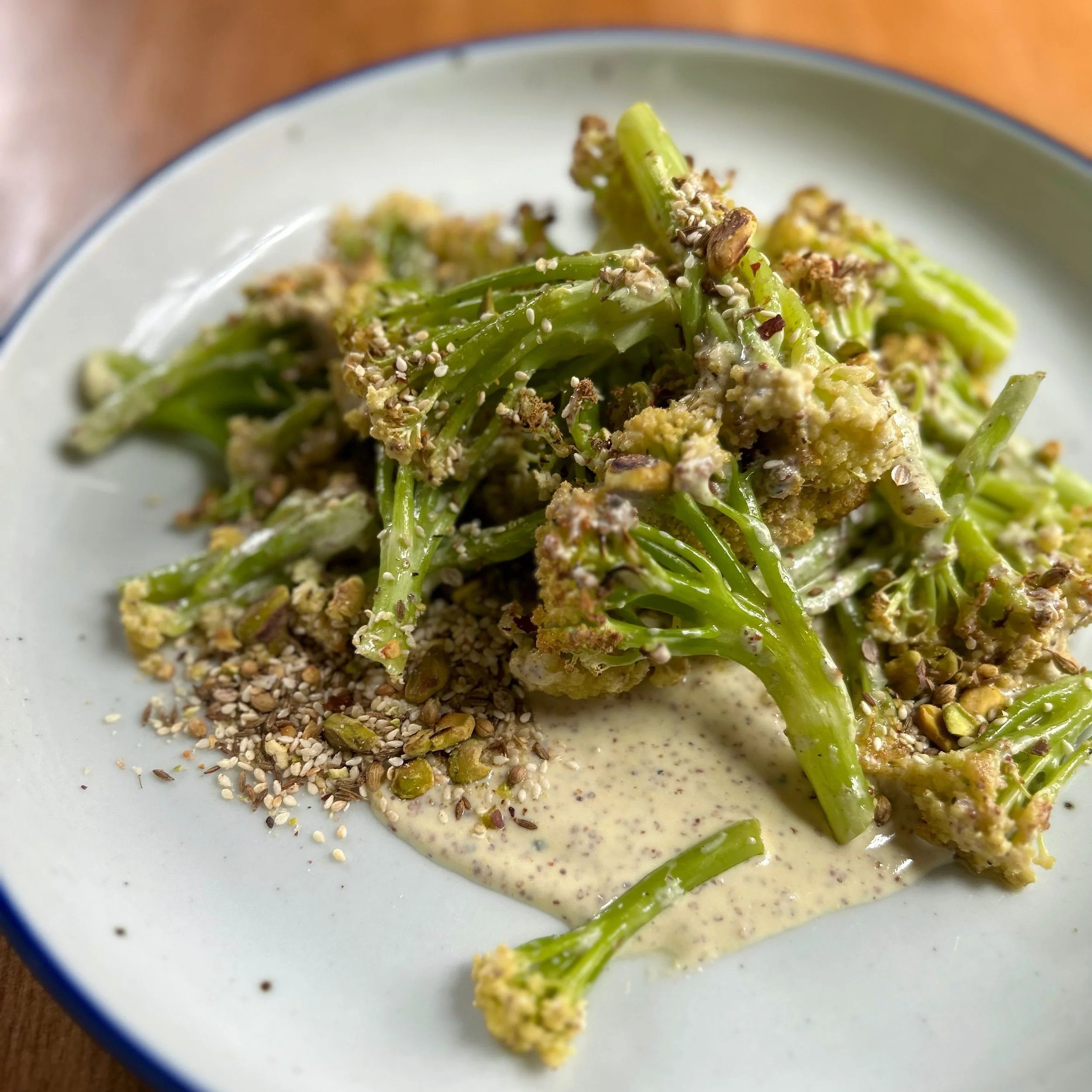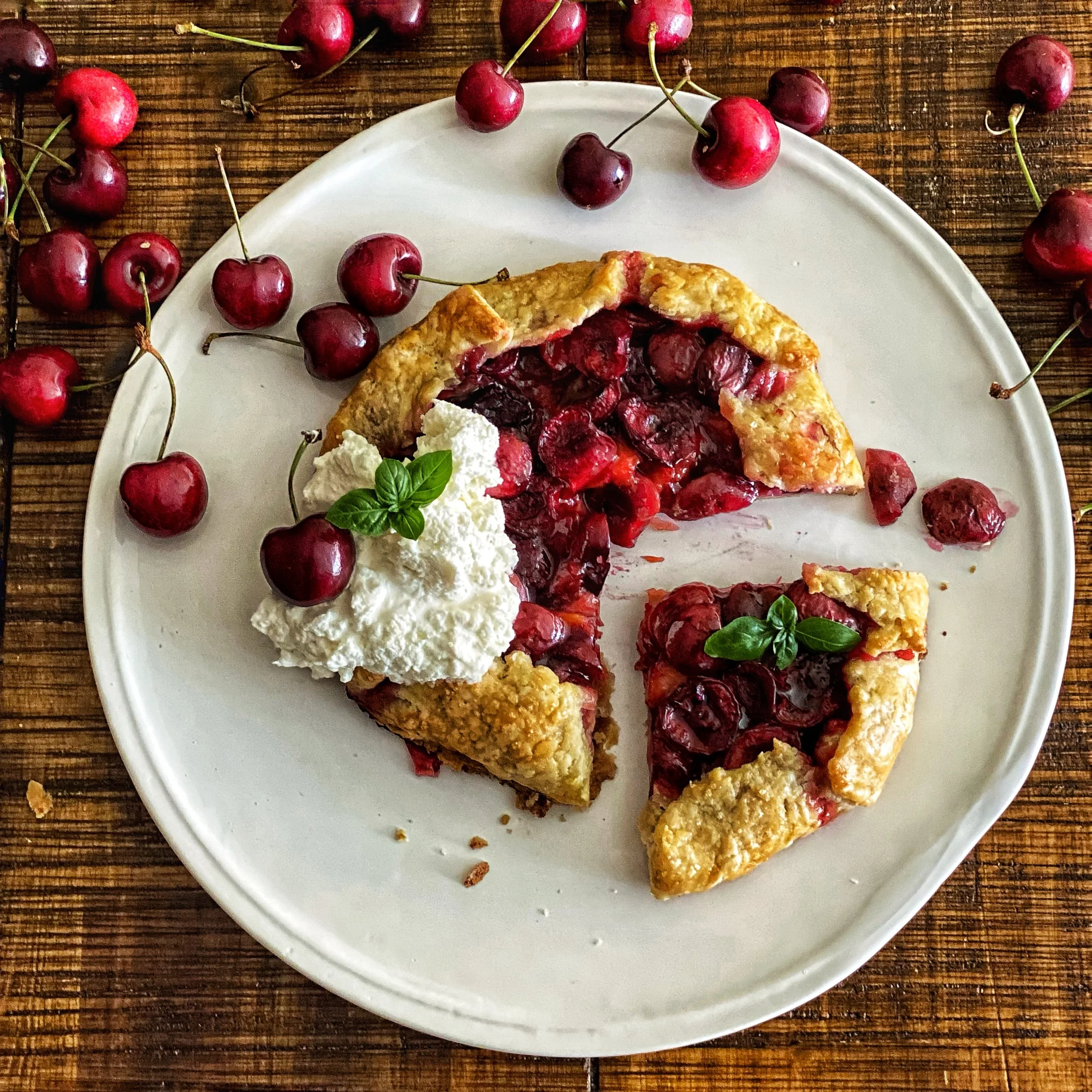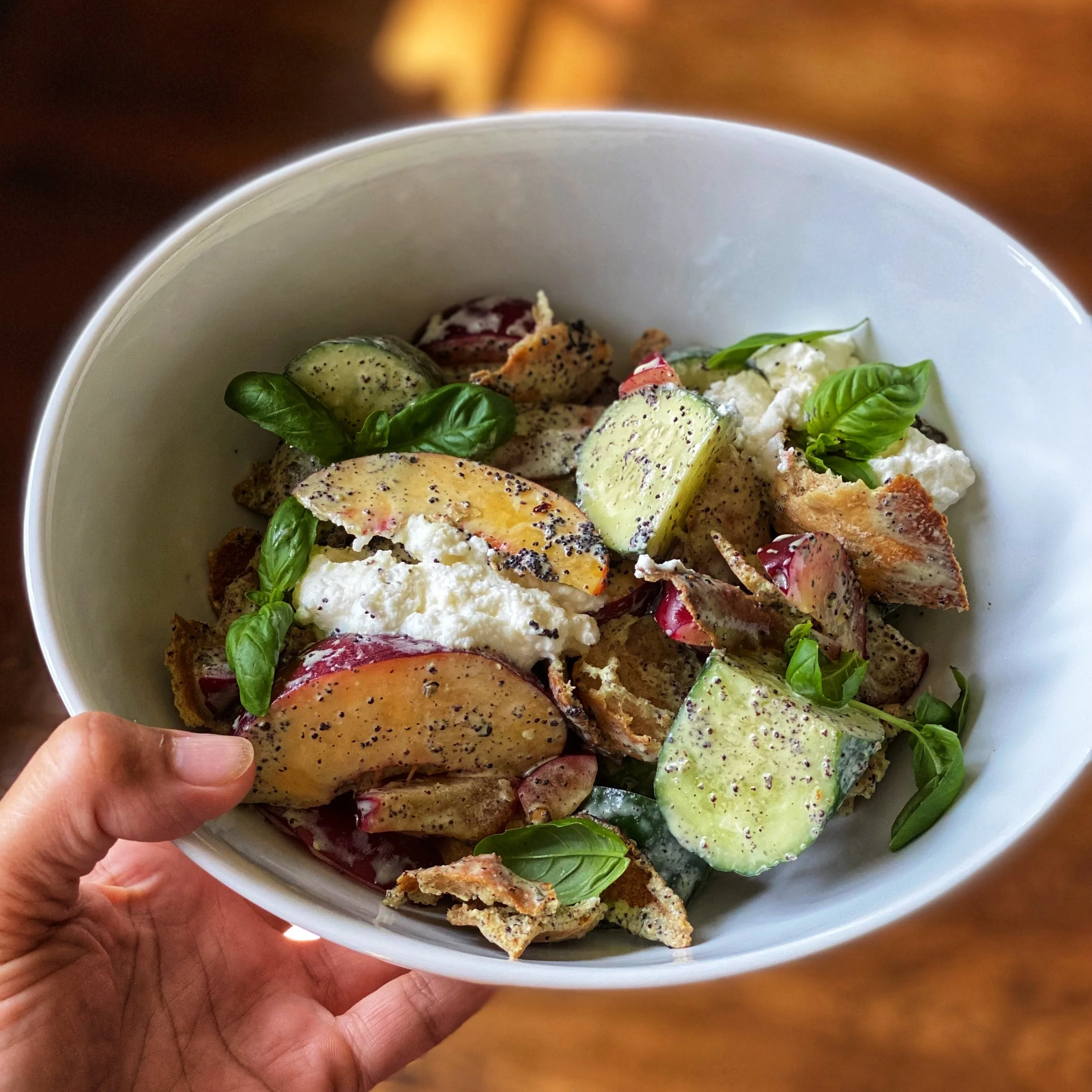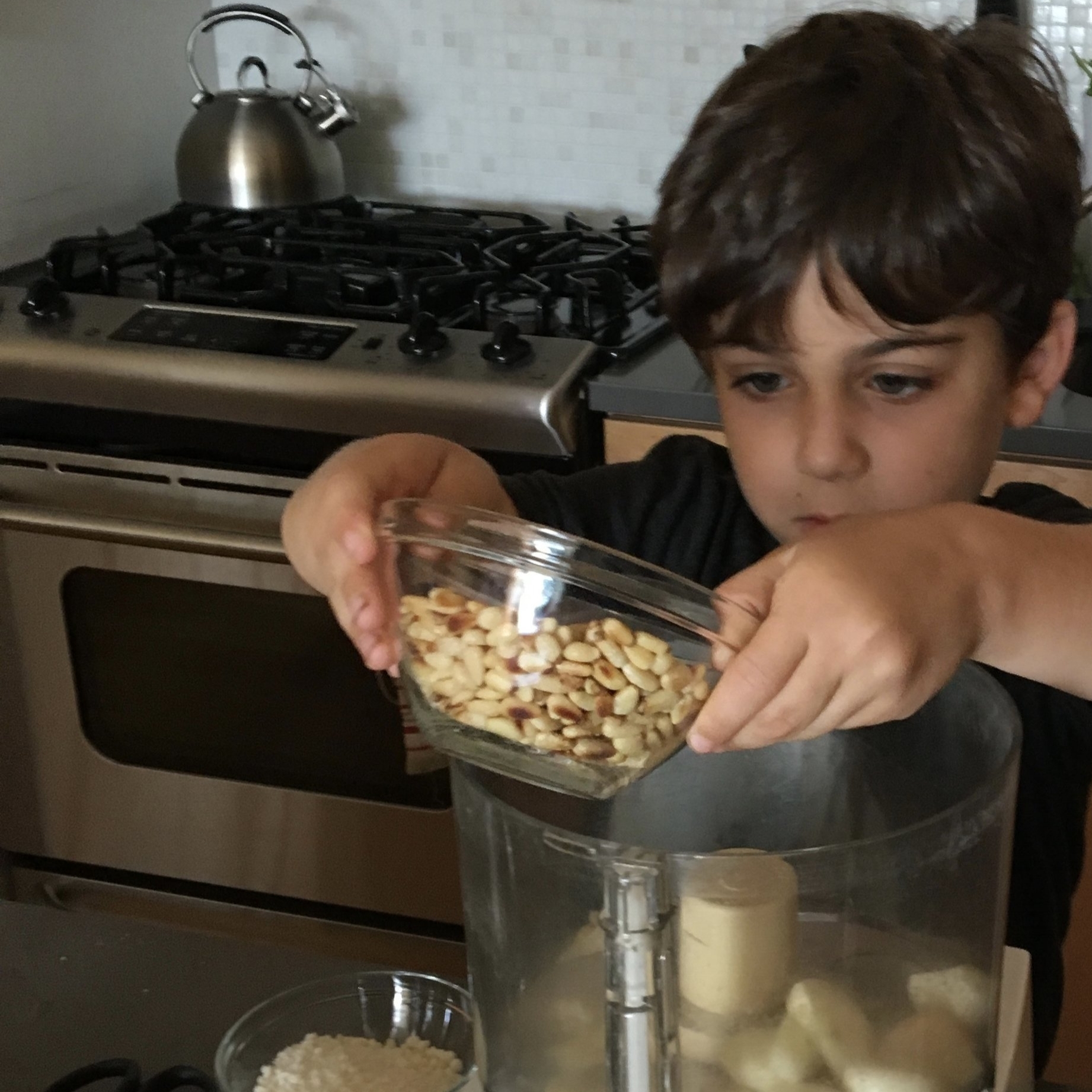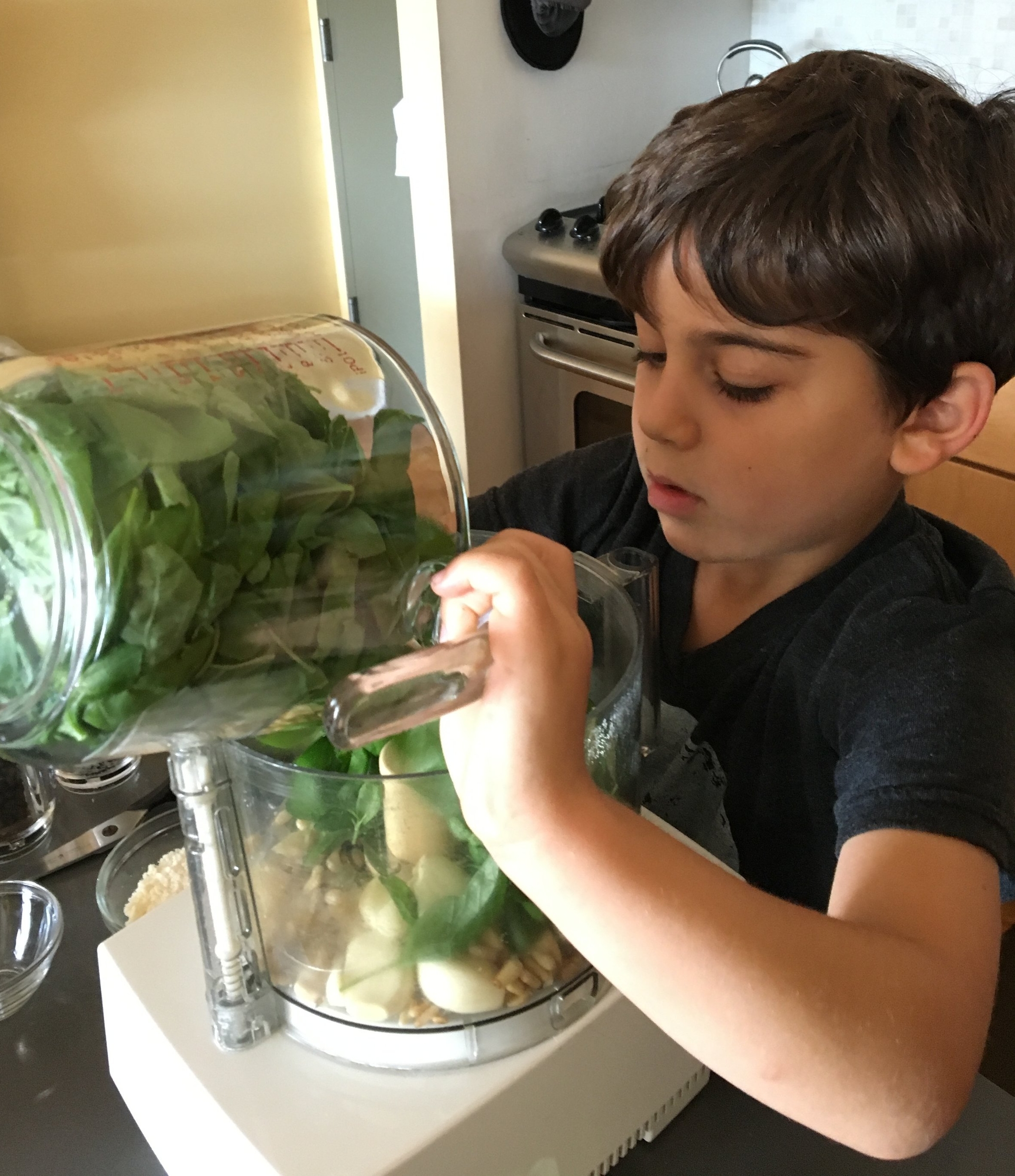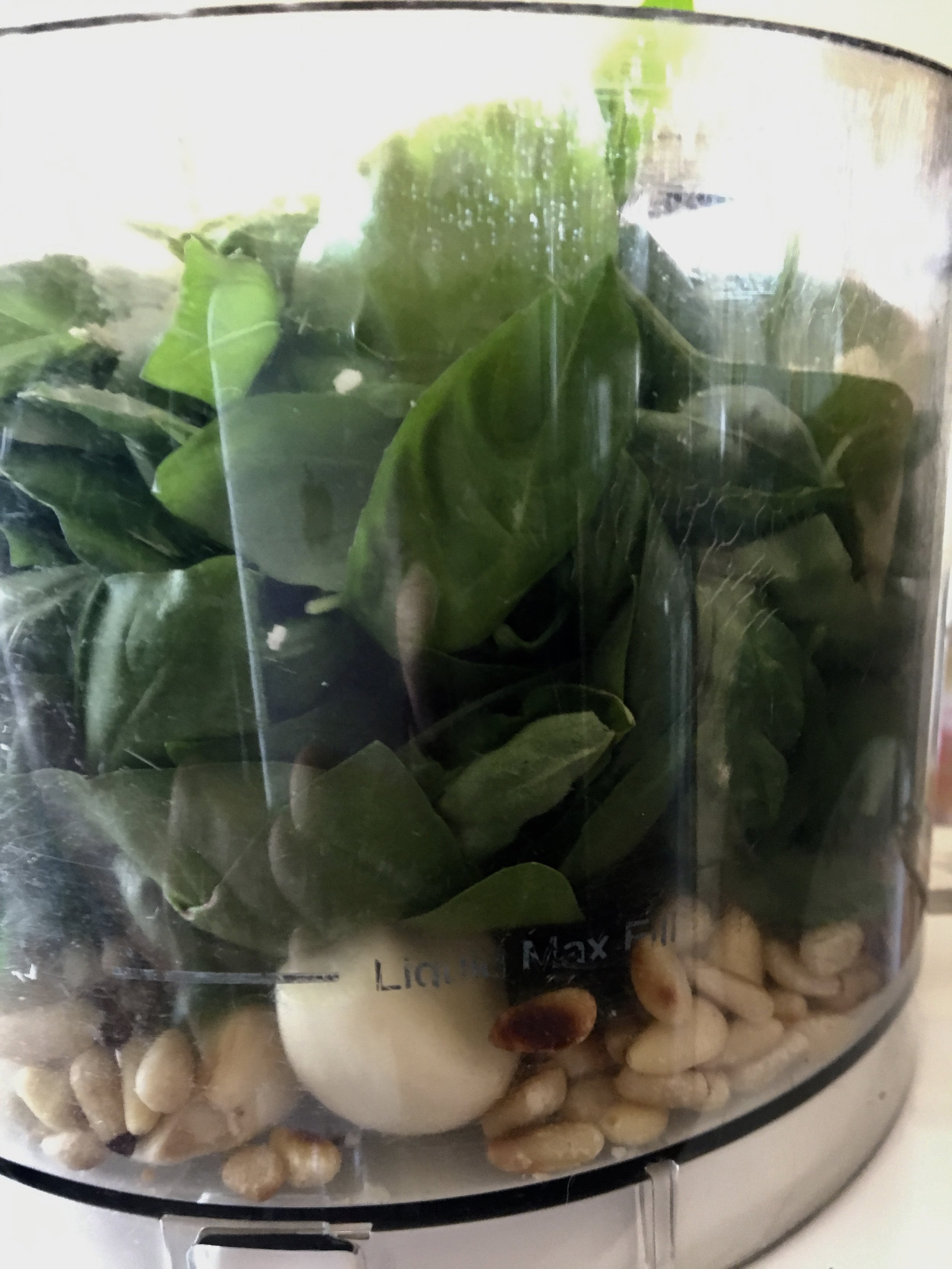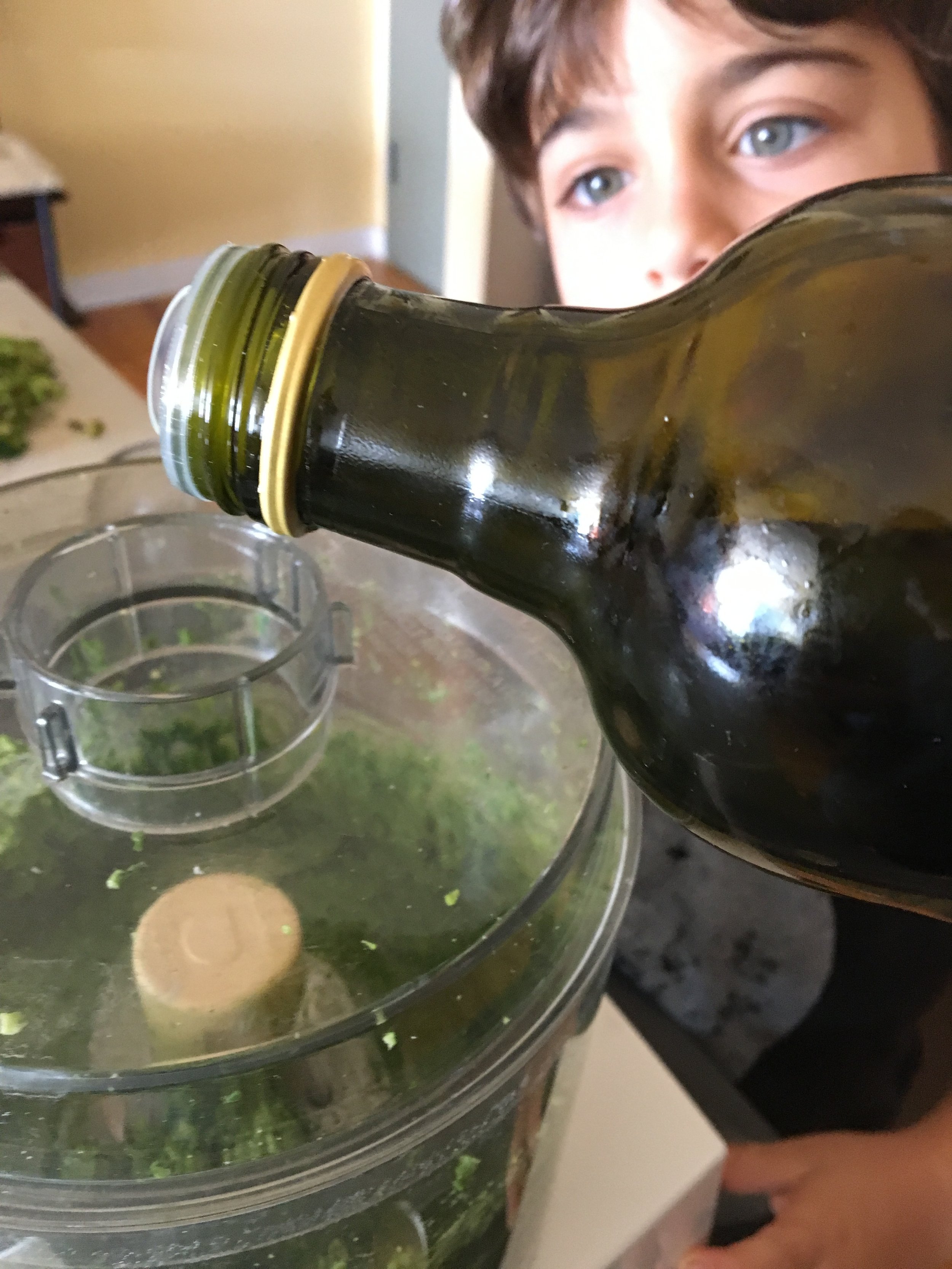Pesto is a comforting stand by, a loyal friend that rarely lets you down. Here are 5 reasons I love to produce pesto:
You can assemble it in a matter of minutes.
You don't need a recipe or any specific ingredients. See below for the "formula" and suggested combinations. It's a great way to use up herbs you have on hand (Do you have an entire $2 bunch of cilantro remaining after your recipe called for a teaspoon minced for garnish? Are you pruning back your herb plants to promote their continued growth? Did you get bundles of herbs in your CSA bounty?)
It can be used immediately, saved in a jar and eaten throughout the week or frozen in batches for a February day when the herb plants have all but dried up.
It's kid helper-friendly. Little hands are great at plucking leaves from stems and can help blend items safely in a locked food processor.
Pesto has endless applications: top fish before baking it, thin it out and use as a sauce to spruce up a protein presentation, mix into a pasta, risotto or other grain dish, dress some zucchini "noodles", spread on a sandwich, mix into scrambled eggs or quiche, or top a soup.
Presto Pesto - A Formula
Once you have this basic formula for pesto, you can make all types with whatever leaves you have.
Here's what you need:
the measurements are guidelines, not requirements
2 cups of aromatic leaves (basil, mint, cilantro, parsley, arugula, even carrot and radish greens)
2-4 cloves of garlic (or garlic scapes or green garlic)
1/4 cup lightly toasted nuts or seeds (pine nuts, walnuts, almonds, pumpkin seeds)
1/2 cup oil
1/4 cup grated cheese (parmesan, pecorino romano or another hard cheese, optional, see note)
salt and pepper to taste
Here's what you do:
Put all that stuff in a food processor (like one of these), and just let it go. If you want to be more technical, purée the leaves, garlic and nuts first until ground, evenly sized, and well combined. Scrape down the sides, replace the lid, and then process again while streaming the olive oil into the mixture slowly. Add cheese, salt, and pepper at the end to taste and process again until evenly incorporated.
Some recipes suggest adding lemon juice or zest which provides a nice balance of flavor. However, be careful with the acid. It will turn your greens to a less appetizing olive color. If at all, only add right before serving and not if you plan to store your pesto for any length of time.
*Note: you can also go vegan and omit the cheese entirely or replace it with a tablespoon or so of miso paste or a teaspoon of umeboshi paste to get that umami flavor you expect in a pesto. We often omit the cheese for a certain member of the family who is cheese-phobic. (I know. Eye roll, plus incredulous look that says, "how is it possible that an adult human does not like cheese?" Don't get me started. You will read many other posts from me about avoiding & replacing cheese, so you are in luck if you cook for a lactose intolerant or simply cheese intolerant person.)
Here are some of my favorite combinations:
basil + pine nuts + olive oil + garlic scapes - garlic cloves
arugula + pine nut + olive oil
mint + almond + canola oil
oregano + hazelnuts + hazelnut oil
mint + pistachio + garlic + olive oil
cilantro + coconut meat + coconut oil - cheese (technically not a nut, but it fits the formula)
radish greens + pistachios + parmesan + olive oil
You can also mix and match herbs and nuts. Play around with it. There are few rules in pesto. What tastes good to you? What combinations do you use?

